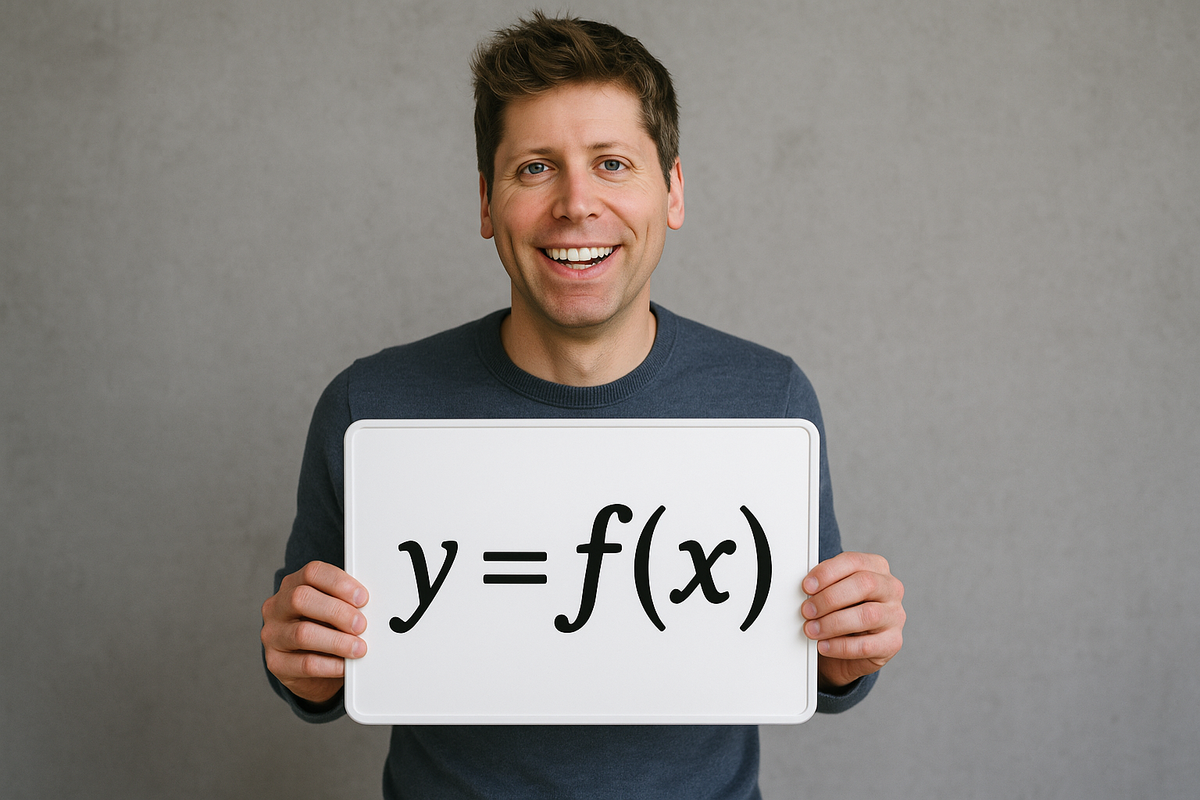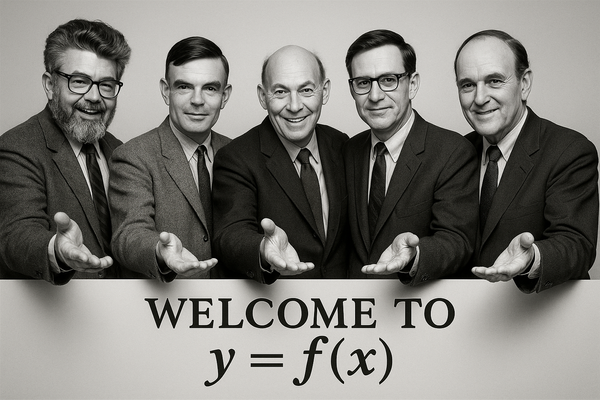#003: Why Every AI is an f(x) at Heart: Bringing Abstract Math into Everyday Understanding

When we think about artificial intelligence, we often imagine complex neural networks, vast data centers, and futuristic applications. Yet, at its core, every AI system boils down to something beautifully simple: y = f(x). This little formula—an input, a transformation, and an output—captures the soul of AI better than any buzzword ever could.
The Essence of y = f(x)
In mathematics, y = f(x) simply means that "y" (the output) is a result of applying some function "f" to "x" (the input). It’s the cleanest way of saying: "What you get depends on what you put in and how you process it."
- x = the raw material, the question, the data
- f = the process, the logic, the function that interprets
- y = the answer, the insight, the result
This isn't just math. It's how everything from your Netflix recommendations to autonomous driving works.
AI: Functions on a Grand Scale
Every AI model—whether it's a simple spam filter or a giant language model—is an instantiation of this basic idea:
- Input (x): A string of text, an image, a bank transaction record.
- Function (f): A trained algorithm—whether a decision tree, a neural network, or a reinforcement learning agent—that processes the input based on patterns learned from data.
- Output (y): A prediction, a classification, a recommendation, a decision.
At the deepest level, AI is just function after function, layered and optimized to map one reality to another.
Everyday Examples of f(x) in AI
Let's bring this concept even closer to home with a relatable example:
Example: Email Spam Detection
- x = The content of an incoming email: words, sender address, subject line, embedded links.
- f = A trained AI model that checks for patterns based on thousands of known spam and non-spam emails. It analyzes word frequency, suspicious URLs, sender reputation, and formatting.
- y = A decision: mark the email as 'spam' or allow it into your inbox.
Every time your email service catches a phishing attempt or spam promotion without you even seeing it, it’s an invisible application of y = f(x) in action.
- Voice Assistants: You say, "What's the weather today?" (x). Natural language processing (f) interprets your voice and pulls forecast data (y).
- Online Shopping: Your browsing history (x) is analyzed by recommendation algorithms (f) to suggest new products (y).
- Healthcare Diagnostics: MRI images (x) are processed by deep learning models (f) to detect anomalies like tumors (y).
When you strip away the jargon, the essence of AI is as accessible as flipping a light switch: Input → Process → Output.
Why This Matters
Understanding AI as "just" a series of functions makes it:
- Less intimidating: AI is math, not magic.
- More trustworthy: If we can see the functions, we can question and improve them.
- More empowering: It invites more people to participate, innovate, and critique AI systems.
If we demystify AI, we democratize it.
Closing Thoughts
Leonhard Euler’s simple notation y = f(x) gave mathematicians a universal language for transformation. Today, it gives us a lens to understand one of humanity’s most powerful tools: artificial intelligence.
Every time a machine makes a decision, recommends a movie, drives a car, or diagnoses a disease, it's simply calculating its version of y = f(x).
And that’s not just math—that’s the future, written in functions.
– Sandeep Pamulaparthi & Laxmi Nanditha Vijay
Founders, yequalsfofx.com



